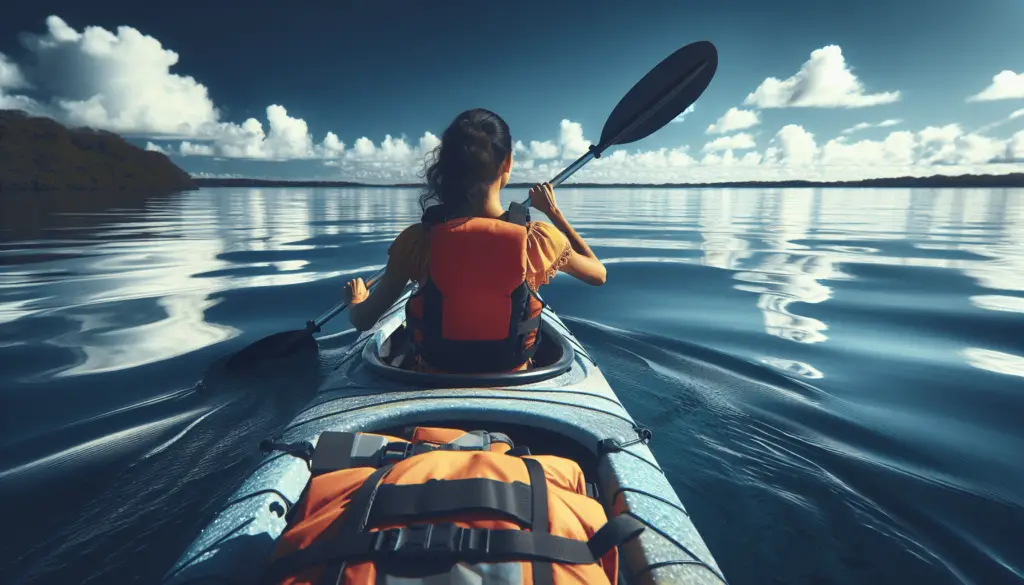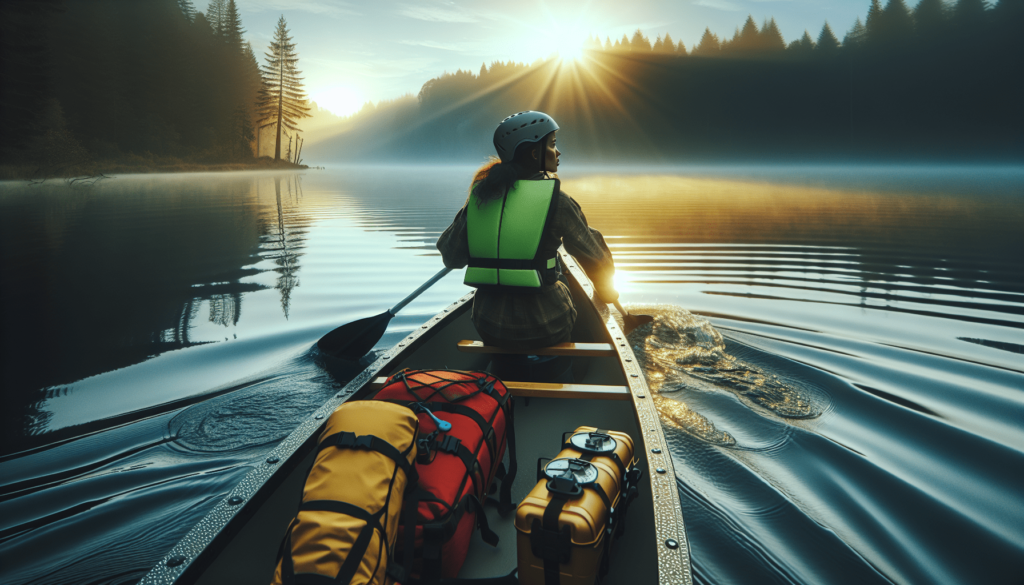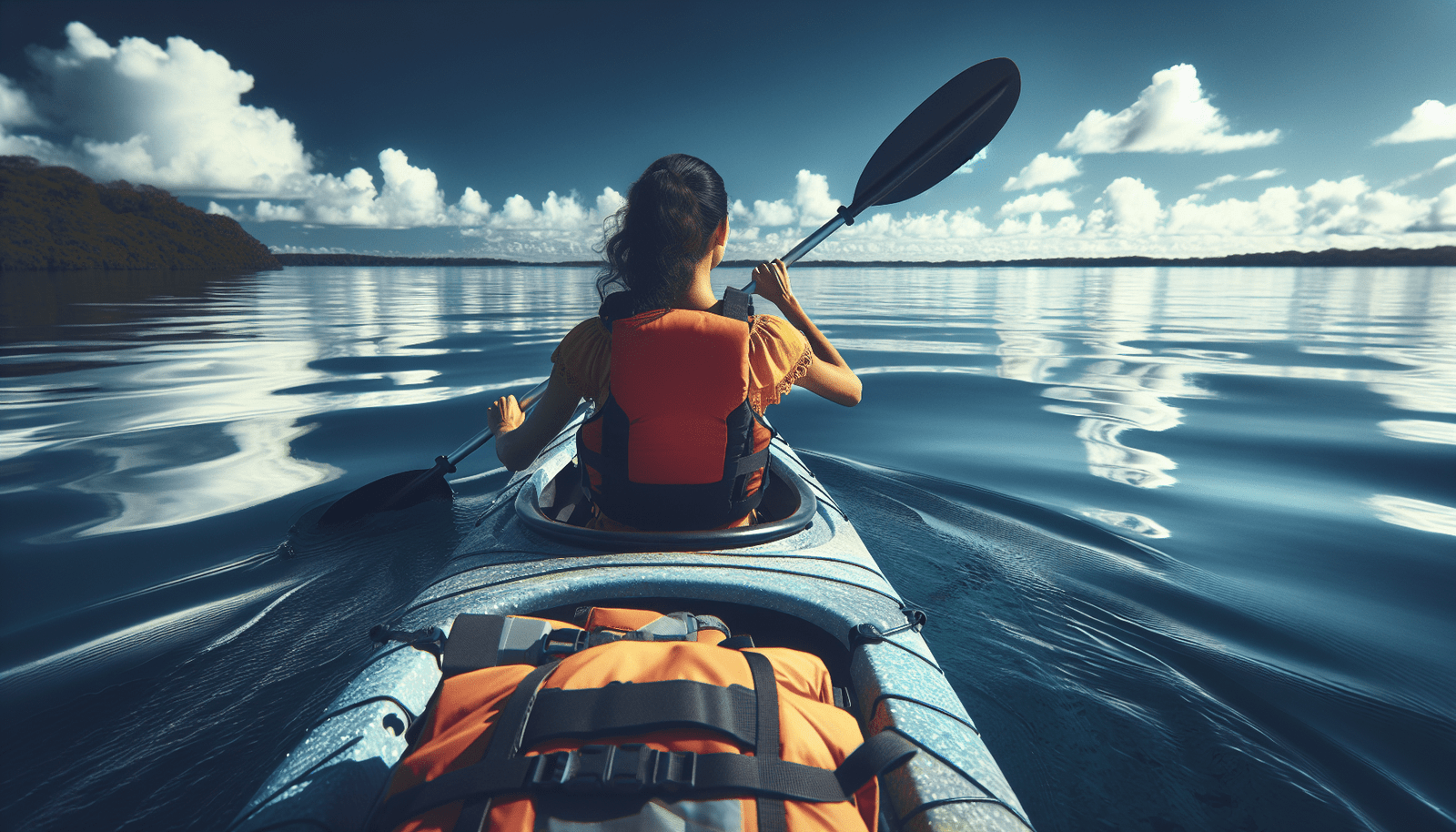As a fan of water sports, you’ve probably reveled in the thrill of managing a paddlecraft in gentle lagoons or against roaring waves, feeling the climate on your skin and listening to the rhythm of nature’s songs. In the dance of adventure and excitement, safety is a partner that should never be neglected. This article takes the helm in navigating a course through Boating Safety Tips for Paddlecraft Users. It’s a guide that’ll equip you with keen insights and tips to keep your aquatic journeys safe, but still riveting. From calm to tempestuous seas, your paddlecraft will become an extension of your will, all while preserving the sanctity of safety in your aquatic adventures. It is not only an article, but indeed your maritime atlas for the safe and sound paddlecraft escapades!
Understanding Paddlecraft Types
Navigating the expansive world of paddlecraft can be like navigating through a choppy sea. Broadly categorized into kayaks, paddleboards, canoes and paddleboats, each vessel is uniquely suited to different bodies of water.
Learning about kayaks
Kayaks are popular water vessels used in both fresh and saltwater environments and are characterized by their enclosed decks and cockpit design. The rider sits in a closed cockpit, or sometimes an open top, and uses a double-bladed paddle to travel through the water. Some kayaks are designed for leisurely rides on calm waters, while others are built for the rush of whitewater rapids.
Getting to know paddleboards
Paddleboards, a newer entrant in the paddling world, offer a unique and engaging experience. Riders stand upright on the board and use a single-blade paddle to propel themselves across the water surface. These versatile devices can be used for a serene lake tour, an intense ocean surfing session, or as an excellent platform for practicing yoga.
Distinguish between canoes and paddleboats
Canoes and paddleboats often get confused, but they serve different purposes and require different techniques. Canoes are typically open-top vessels designed to carry multiple passengers, and are propelled by the users using single-bladed paddles. Paddleboats, on the other hand, are propelled by pedals and are suited for calm, recreational water bodies such as ponds or lakes.
Core Safety Equipment
When it comes to paddlecraft activities, safety should be your paramount concern, and the correct equipment is the key to ensure it.
Importance of Personal Flotation Device or Life Jackets
One of the most critical safety tools for any water activity is the Personal Flotation Device (PFD) or life jacket. Designed to keep you afloat in the water, a PFD can be a lifesaver in the event of an accidental capsize or fall overboard.
Discussing Suitable Paddlecraft Lights
Lights are not just for seeing; they are also crucial for being seen. If you plan to paddle in low-light conditions, ensure that your vessel is equipped with appropriate lights. From headlamps to navigational lights, these tools help you navigate safely, and more importantly, they make you visible to other water users.
Necessity of Sound Signal Devices
Sound signal devices like whistles and air horns are invaluable for alerting others of your presence, especially in foggy weather or if you’re in distress. They are simple, lightweight, and require no batteries, making them an essential piece of safety equipment.
Utilizing Navigation Tools
Whether it’s a traditional compass or a modern GPS device, navigation tools are crucial in helping you understand your position and plan your route effectively.

Weather and Environmental Awareness
Being weather-wise and having environmental awareness are two important skills for any paddler.
Checking Weather Forecast
Always check the weather forecast before setting out. Changes in weather conditions can turn an enjoyable ride into a dangerous ordeal. Stay alert for signs of bad weather and be prepared to adjust your plans accordingly.
Understanding the role of temperature
The water temperature can significantly impact your paddling experience. Cold water can cause hypothermia or cold shock, while hot weather can lead to dehydration and exhaustion. Dress appropriately for the condition and stay hydrated.
Identifying potential hazards in the environment
From underwater currents to overhanging branches, hazards can be lurking anywhere. Always scope out your surroundings before setting out. Identify potential threats and plan your route to avoid them.
Paddlecraft Maintenance and Safety Check
A well-maintained paddlecraft is the foundation of a safe journey on the water.
Review the Hull condition
The hull condition is crucial for the performance and safety of your vessel. Regularly check for dents, cracks or leaks, and address any issues before they become serious problems.
Checking the flotation bags
Flotation bags enhance your paddlecraft’s buoyancy, making it critical to ensure they are in good condition. Regularly inspect the bags for leaks and ensure they are adequately inflated.
Ensuring smooth operation of devices
The moving parts of your paddlecraft like the rudder, skeg, or foot pedals should be checked for proper operation. A small flaw in any of these components can significantly impact the craft’s performance and your safety.

Launching and Landing Safely
Mastery over navigating your paddlecraft extends to both getting into and out of the water.
Choosing the correct launching site
Choosing an appropriate launching site with easy access to the water and ample space for your equipment is crucial. Ensure it is free from obstructions and that it allows for a safe and controlled entry into the water.
Mastering the paddling techniques
Understanding and mastering a variety of paddling techniques can significantly improve your control over the paddlecraft. From forward strokes to steering and bracing strokes, the right technique can make your ride smoother and safer.
Safe disembarking
How you exit the water is just as important as how you enter it. Approach the landing spot slowly, brace yourself, and try to keep the craft as stable as possible as you climb out.
Right Clothing for Paddlecraft Users
The right clothing can make a significant difference in your comfort and safety while out on the water.
Dressing for the water, not the weather
It can be tempting to dress for the warm weather on land, but one must dress for the water temperature. Hypothermia can strike even in warm weather if the water is cold. Choose your clothing that can help maintain your body’s core temperature.
Importance of wearing a Wet suit or Dry suit
A wet suit or dry suit can provide insulation in cold water and guard against hypothermia. Bear in mind, wet suits are designed to keep you warm even when wet, while dry suits are made to keep you dry.
Use of Hat and Sunglasses
The sun’s glare can be harmful to your eyes, and the added reflection off the water surface amplifies this. A broad-brimmed hat and UV-protective sunglasses can help shield your eyes.
Proper Hydration and Nutrition
Fueling right and staying hydrated is essential for any physical activity, and water sports are no exception.
Dehydration risks while paddling
With the sun’s heat and the exercise of paddling, it is easy to become dehydrated. Dehydration can affect your stamina and ability to focus, making it a safety concern. Carry ample water and drink regularly.
Choosing right nutritional snacks
The right snacks can fuel your paddling activities and aid recovery afterwards. Opt for foods that provide a good mix of carbohydrates and protein, such as energy bars or fruits.
Avoiding alcohol before and during paddling
Alcohol and water sports are a dangerous mix. Alcohol impairs your balance, coordination, and judgement, making you more susceptible to accidents. Avoid alcohol before and during paddling activities.
Handling Strong Currents and Wind
Dealing with strong currents and wind requires knowledge, skill, and a calm mind.
Understanding the water current
The current beneath the surface may be stronger than it appears, and it can greatly influence your paddlecraft maneuverability. Learn to read and understand the current flow and adjust your paddling techniques accordingly.
Techniques for paddling in windy conditions
Wind can both aid and impede paddling. A tailwind may propel you forward, while a headwind may make progress difficult. Learn various techniques to handle windy situations efficiently and safely.
Safety rules when dealing with current and wind
Always be mindful of the potential danger posed by strong winds and currents. If conditions are too challenging, it’s wise to head to the shore.
Staying Visible in the Water
Visibility in the water is a significant safety concern. It is always important that others can see you clearly.
Keeping a safe distance from larger vessels
Large vessels, such as ships and motorboats, can create large waves and have less maneuverability. Keep a safe distance from them to avoid encountering situations such as wake turbulence or collision.
Effective ways to signal for help
If you’re in distress, it’s imperative to know how to signal for help. Sound devices, flares, and brightly colored flag signals can attract the attention of nearby craft or people onshore.
Use of high-visibility gear
Donning brightly colored clothing or gear can significantly increase your visibility. High-vis colors like neon yellow, orange, or pink are most effective and can be easily seen against the water’s surface.
Emergency Situations
Despite preparedness, emergencies can happen. It’s important to know how to react when they do.
Effective communication in times of distress
In an emergency, communication is critical. Ensure you have a method to contact help, such as a mobile phone in a waterproof case or a marine VHF radio.
Handling overturning of the paddlecraft
Paddlecraft, particularly kayaks and canoes, may capsize. It’s important to know how to react in this situation. Learn self-rescue techniques and practice them regularly.
Rescue and recovery procedures
In addition to self-rescue, it’s essential to know how to assist others. Education and practice are key to effective rescues. Take a certified rescue and recovery course to be fully prepared for any situation. Remember, outdoor adventures are best enjoyed with safety at the forefront. Equip yourself fully and embark on your paddling journey with confidence.

